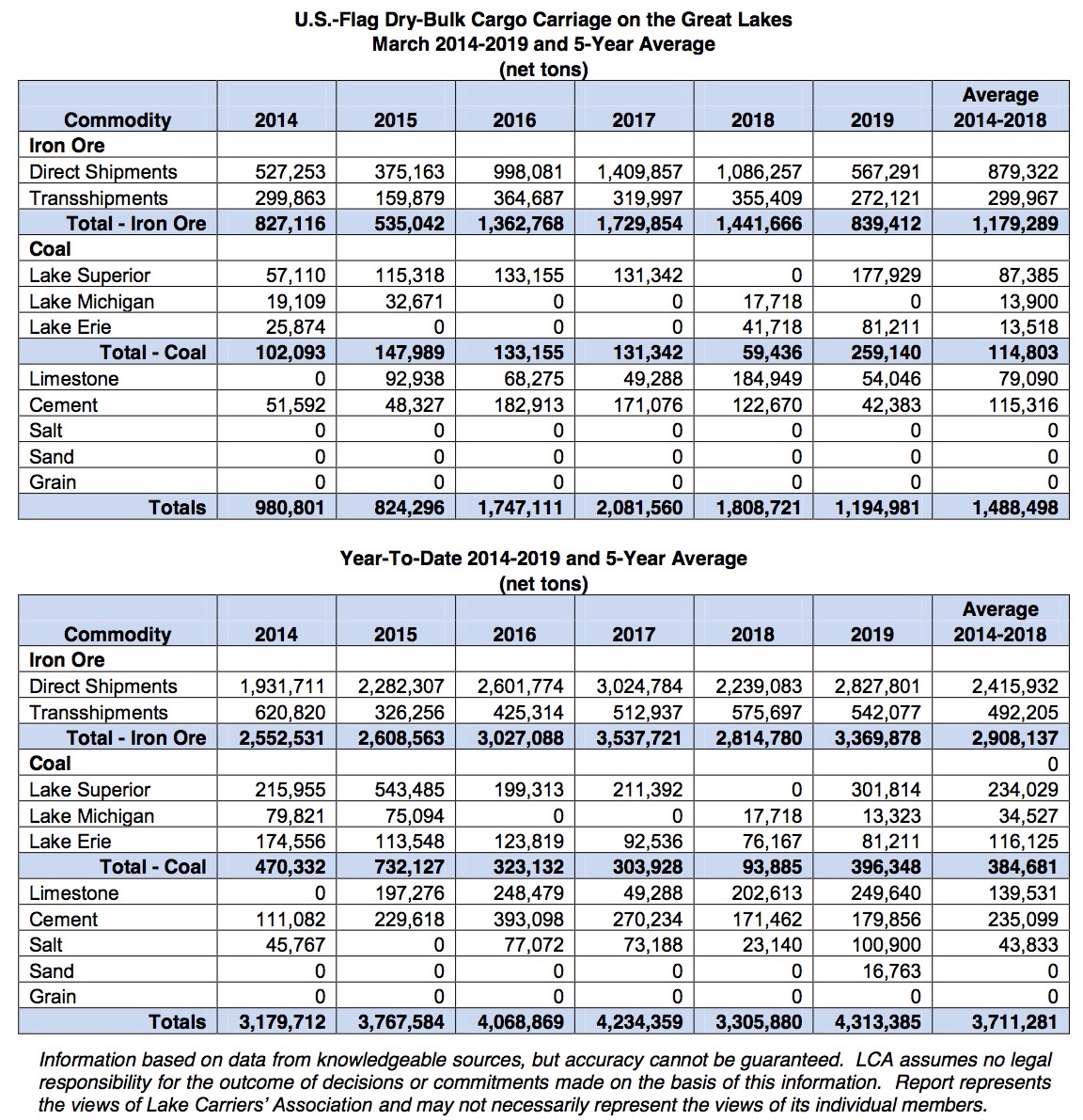The following is text of a news release from the Lake Carriers' Association (LCA):
(CLEVELAND) — U.S.-flag Great Lakes freighters (lakers) carried 1.2 million tons of cargo in March, a decrease of nearly 34 percent compared to a year ago. March’s float was also 19.7 percent below the month’s five-year average.
The decreases reflect the inadequacy of icebreaking resources stationed on the Great Lakes. Two U.S. Coast Guard icebreakers were out of service in March. A Canadian icebreaker tasked to Lake Superior was only able to operate at 60 percent of capability (and then was idled for most of April by mechanical issues).
Iron ore cargoes for steel production totaled 839,412 tons, a decrease of 41.8 percent from March 2018. All U.S. iron ore now originates from Lake Superior ports and therefore is most heavily impacted by lack of icebreaking. However, the 2019 year-to-date total for the U.S.-flag iron ore trade stands at 3.4 million tons, an increase of 19.7 percent from the 2018 year-to-date total. The increase reflects the mild weather conditions that prevailed this January.
U.S.-flag coal cargoes more than quadrupled from March 2018 to 259,140 tons, while limestone loadings decreased by 71 percent compared to a year ago. Year to date, coal cargoes total 396,000 tons, an increase of 92,000 tons. The U.S.-flag limestone trade stands at 250,000 tons, an increase of two loads in a mid-sized laker.

